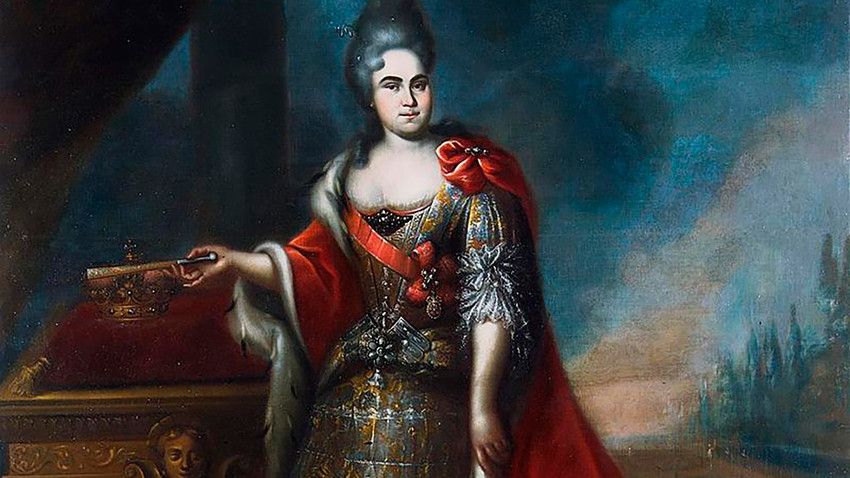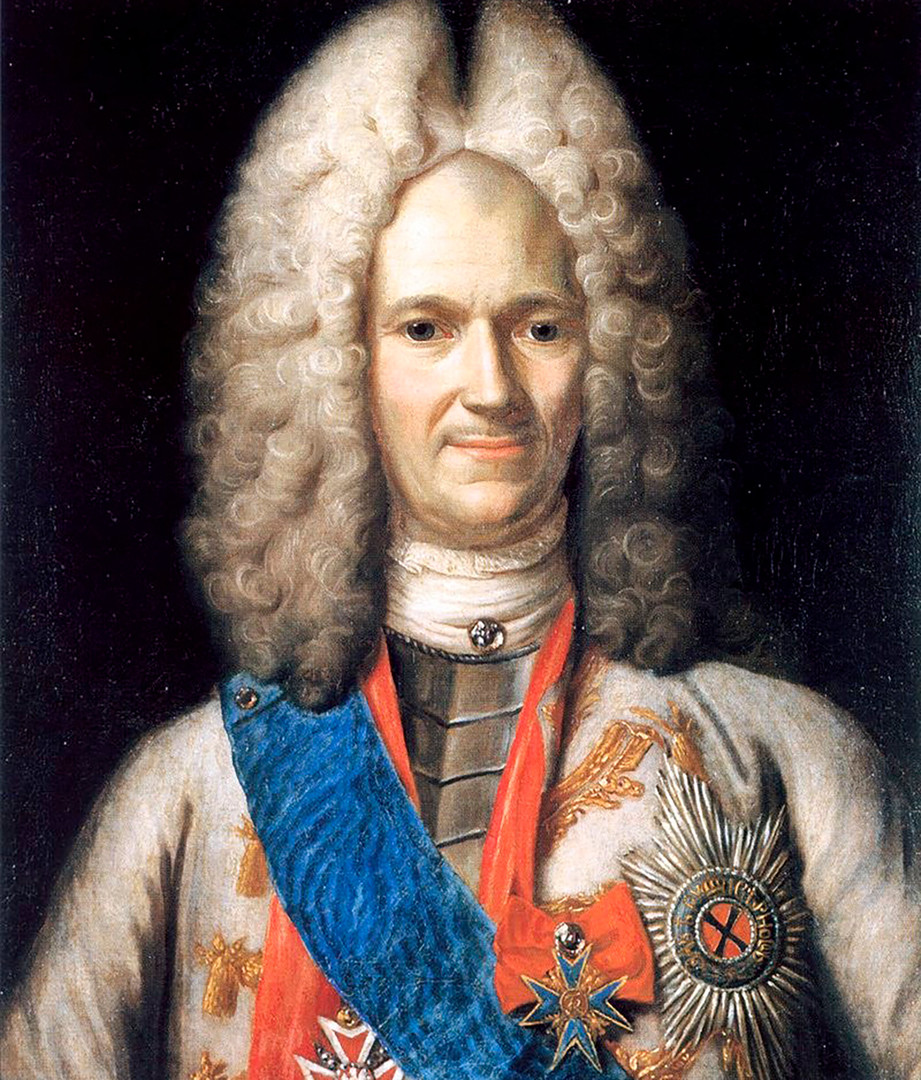
Catherine I, the Russian empress in 1725-1727.
An unknown painter/Hermitage/WikipediaThe wife of the reformist Russian czar, Peter the Great, was as peculiar as his reign, which was filled with a constant drive toward modernization, aimed at uprooting the traditional Russian way of life and replacing it with Western habits.
It is not clear where the first Russian empress, Catherine I, was born. Some specialists say she was from Sweden, but the majority of researchers believe she was actually born in what is now one of the Baltic states—either Estonia or, more likely, Latvia. It is believed she was orphaned during an outbreak of the plague and was brought up by a local pastor. She was known as Marta Skavronskaya and worked as a laundress.
There is more information about the empress’s later life. When she was 17, she married a Swedish cavalryman, who may have been a military trumpeter. Around this time (1702), Marta’s life was seriously affected by the Great Northern War between Russia and Sweden when the place where she lived was captured by Russian troops. Marta was taken as a prisoner and changed hands several times, starting at a low level and ending up in the hands of the field marshal Boris Sheremetyev.
However, this would not be the final stop on this peculiar path in her life. At Sheremetyev’s place, the czar’s right-hand man, Alexander Menshikov, came across her. Menshikov took an interest in the young woman and claimed her as one of his servants so she moved from the field marshal’s headquarters to czar’s favorite place. There, she was spotted by Peter the Great himself, who was also charmed by the woman. Menshikov handed her over to the czar.
Marta remained friends with Menshikov for all of her life. They say that the friendship was based on their similar origins, and they were socially close to each other because Menshikov was also a commoner.

Alexander Menshikov, an associate and friend of tsar Peter the Great.
An unknown painter/WikipediaMarta’s relationship with Peter the Great lasted until his death in 1725. They were married and, later on, he proclaimed her to be the empress. Because her situation was unprecedented in Russian history, it was possible for her to be announced the official ruler of the empire when Peter died. She was baptized as an Orthodox Christian and took the name Catherine. Her godfather was Peter’s son from his first marriage, Aleksei.
There are contradicting opinions about Catherine’s appearance. According to one of her contemporaries, “she stood out with her beauty and ample stature.” At the same time, historian Evgeniy Anisimov argued that Catherine “lacked the angelic beauty of her daughter Elizabeth I and the refined grace of Catherine II. She had wide bones, and was chubby and sunburnt like a commoner … ”
The controversy over her looks and the way she became elevated to the highest possible level of Russian society made some people think that it had been done with the help of some sort of magic. History has remembered a corporal of one of the regiments of the Russian army Vasiliy Kobylin who claimed with all seriousness that Catherine used some sort of witchcraft to tie Peter to herself. According to the corporal, she did this magic along with Menshikov, which would provide an explanation for his long presence near the throne as well.
If one reads the letters that Peter and Catherine exchanged, it is evident that their relationship was strong and sincere. “Katerinushka [little Catherine], my friend,” he addressed her when he wrote.
She was one of the few people who was not afraid of his famous fits of anger—Peter was known for his stern temper. He personally decapitated several soldiers who took part in a mutiny. Peter took part in torturing his own son Aleksei after he was convicted of treason and subsequently executed. They say, however, that Catherine had a calming effect on the vehement czar.
Despite having such a temper, Peter forgave her infidelity when it was disclosed shortly before his death. Her lover, however, did lose his head as a result of the wrath of the dying emperor.
After Peter’s death, Catherine became empress with the help of the elite guard regiments and Menshikov. It was he who acted as the de facto ruler during her short two-year reign, which ended with her death in 1727.
Read more:
If using any of Russia Beyond's content, partly or in full, always provide an active hyperlink to the original material.
Subscribe
to our newsletter!
Get the week's best stories straight to your inbox